How to Attract Birds to Your Garden
Creating a bird-friendly garden is not just about aesthetics; it’s about fostering a vibrant ecosystem right in your backyard. Imagine waking up to the cheerful chirping of birds, their vibrant colors flitting through your garden. Sounds delightful, doesn’t it? But how do you achieve that? In this article, we'll explore effective strategies for attracting birds to your garden, focusing on habitat enhancement, food sources, and the crucial role of native plants. By the end, you’ll be well-equipped to transform your outdoor space into a bird haven.
One of the most effective ways to attract birds is by selecting native plants. These plants are not only adapted to your local climate but also provide essential food and shelter for birds. Think of native plants as the local cuisine for birds; they thrive on what’s familiar and accessible. By understanding the local flora, you can create an inviting environment that encourages a diverse range of bird species to visit your garden.
Consider incorporating a mix of shrubs, trees, and flowering plants. For example, berry-producing shrubs like elderberry and serviceberry can provide food, while sunflowers and coneflowers attract insects that birds love to eat. Not only do these plants beautify your garden, but they also serve as natural feeders and shelter, making your garden a sanctuary for our feathered friends.
Water is essential for birds, not just for drinking but also for bathing. Imagine the joy of watching birds splash around in a bird bath on a hot summer day! Installing water features like bird baths or small fountains can significantly enhance your garden's appeal. However, it’s crucial to maintain these water sources to ensure they remain clean and inviting. Regular maintenance will keep the water fresh and free from algae, making your garden a popular spot for birds.
When it comes to bird baths, variety is key. Different styles cater to various bird species. Here are a few popular options:
- Shallow Dishes: Ideal for small birds that prefer a quick dip.
- Deeper Fountains: Attract larger birds that enjoy a more extensive bathing experience.
- Heated Baths: Perfect for colder climates, keeping water available year-round.
Choosing the right type of bird bath can maximize visits and ensure the comfort of your feathered guests.
Think about the placement of your bird baths. Placing them in safe, visible areas encourages birds to use them. Ideally, they should be close to cover, like shrubs or trees, where birds can quickly escape from predators. Additionally, consider sunlight exposure; a sunny spot can keep the water warm, making it more appealing for birds.
Regular cleaning of bird baths is essential. Algae growth and stagnant water can harbor diseases that may harm our feathered friends. By keeping the water fresh and clean, you not only attract more birds but also contribute to their health and well-being.
Providing safe nesting sites is another effective way to encourage birds to settle in your garden. Incorporating a variety of shrubs, trees, and even nesting boxes can significantly increase the likelihood of bird families taking residence. Think of your garden as a cozy apartment complex for birds, where they can find shelter and raise their young.
Offering a variety of bird feeders and foods can attract different species to your garden. Understanding the dietary preferences of local birds is crucial in selecting the right feeders and seeds. Imagine setting up a buffet that caters to all your feathered visitors!
Different feeders cater to specific types of birds. Here’s a quick rundown:
- Tube Feeders: Great for finches and smaller birds.
- Platform Feeders: Attract larger birds like doves and jays.
- Suet Holders: Perfect for woodpeckers and other insect-eating birds.
By diversifying your feeders, you can enhance the variety of birds visiting your garden.
Choosing the right seeds can make a significant difference in attracting birds. Some top choices include:
- Sunflower Seeds: A favorite among many bird species.
- Nyjer Seeds: Attracts finches and other small birds.
- Mixed Blends: Offers a variety of seeds to cater to different tastes.
By providing a range of seeds, you’ll create a bustling atmosphere in your garden, filled with chirps and flutters.
1. What plants are best for attracting birds?
Native plants such as serviceberry, elderberry, and sunflowers are excellent choices as they provide food and shelter for various bird species.
2. How often should I clean my bird bath?
It’s best to clean your bird bath at least once a week to prevent algae growth and ensure clean drinking water for the birds.
3. What types of feeders should I use?
Using a combination of tube feeders, platform feeders, and suet holders will attract a diverse range of bird species to your garden.
By following these tips, you’ll be well on your way to creating a bird-friendly garden that not only beautifies your space but also enriches your local ecosystem.
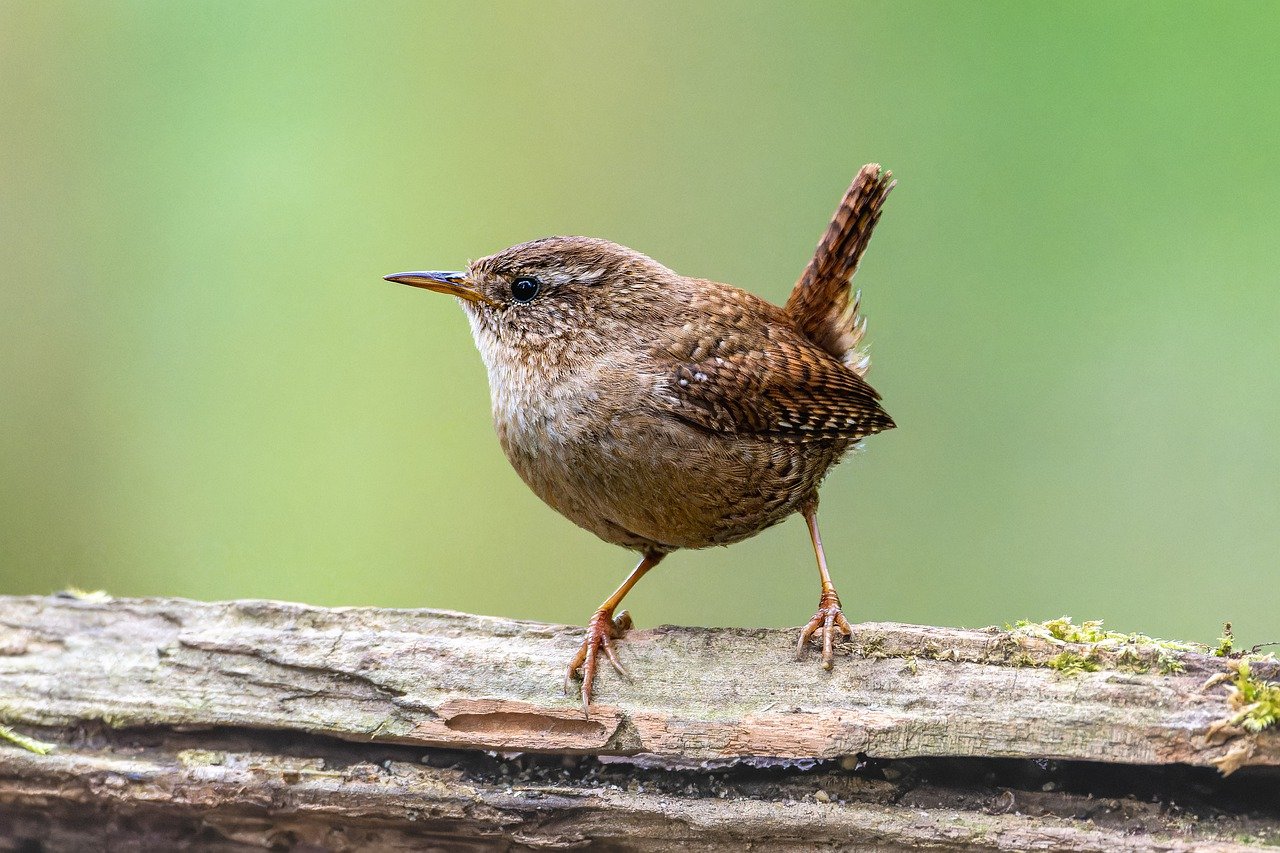
Choosing the Right Plants
When it comes to attracting birds to your garden, is absolutely crucial. Native plants are like a buffet for birds, offering them both food and shelter. Think of your garden as a restaurant where birds come to dine and relax. By selecting plants that are indigenous to your area, you create a natural habitat that supports the local bird population. This not only enhances the beauty of your garden but also fosters a sense of community with the wildlife around you.
Understanding the local flora is key to creating an inviting environment. For instance, different bird species have different preferences when it comes to the types of plants they frequent. Some birds might be attracted to flowering plants that provide nectar, while others may prefer fruit-bearing trees or shrubs. By incorporating a mix of these plants, you can create a diverse ecosystem that caters to various bird species. Here are some examples of native plants that can enhance your garden:
- Wildflowers: These can attract pollinators and provide seeds for birds.
- Berry-producing shrubs: Such as elderberry and serviceberry, which offer a feast for birds.
- Native grasses: They provide cover and nesting materials.
In addition to providing food, native plants also offer essential shelter. Birds need places to hide from predators and to build their nests. Dense shrubs and trees with thick foliage can serve as perfect hiding spots. Imagine your garden as a cozy neighborhood where birds can feel safe and secure. Incorporating layers of vegetation, from tall trees to low-growing shrubs, can create a multi-dimensional habitat that is both visually appealing and functional.
Moreover, planting in clusters rather than single specimens can create a more inviting atmosphere for birds. Clusters mimic the natural growth patterns found in the wild, offering birds a sense of security and community. This is similar to how people feel more comfortable in a bustling café than in a vacant room. By creating these clusters, you not only provide food and shelter but also a sociable environment that encourages birds to visit regularly.
Lastly, don’t forget about the importance of seasonal interest. Choose plants that bloom at different times of the year to ensure that your garden remains attractive to birds throughout all seasons. This way, you can create a year-round buffet, keeping your feathered friends coming back for more. Imagine the joy of seeing different species throughout the seasons, each bringing their unique colors and songs to your garden.
In summary, selecting the right plants is a vital step in attracting birds to your garden. By focusing on native species, providing shelter, and ensuring seasonal diversity, you can create an environment that not only pleases the eye but also nurtures the local bird population. So, roll up your sleeves, get your hands dirty, and start planting—your future feathered friends are waiting!
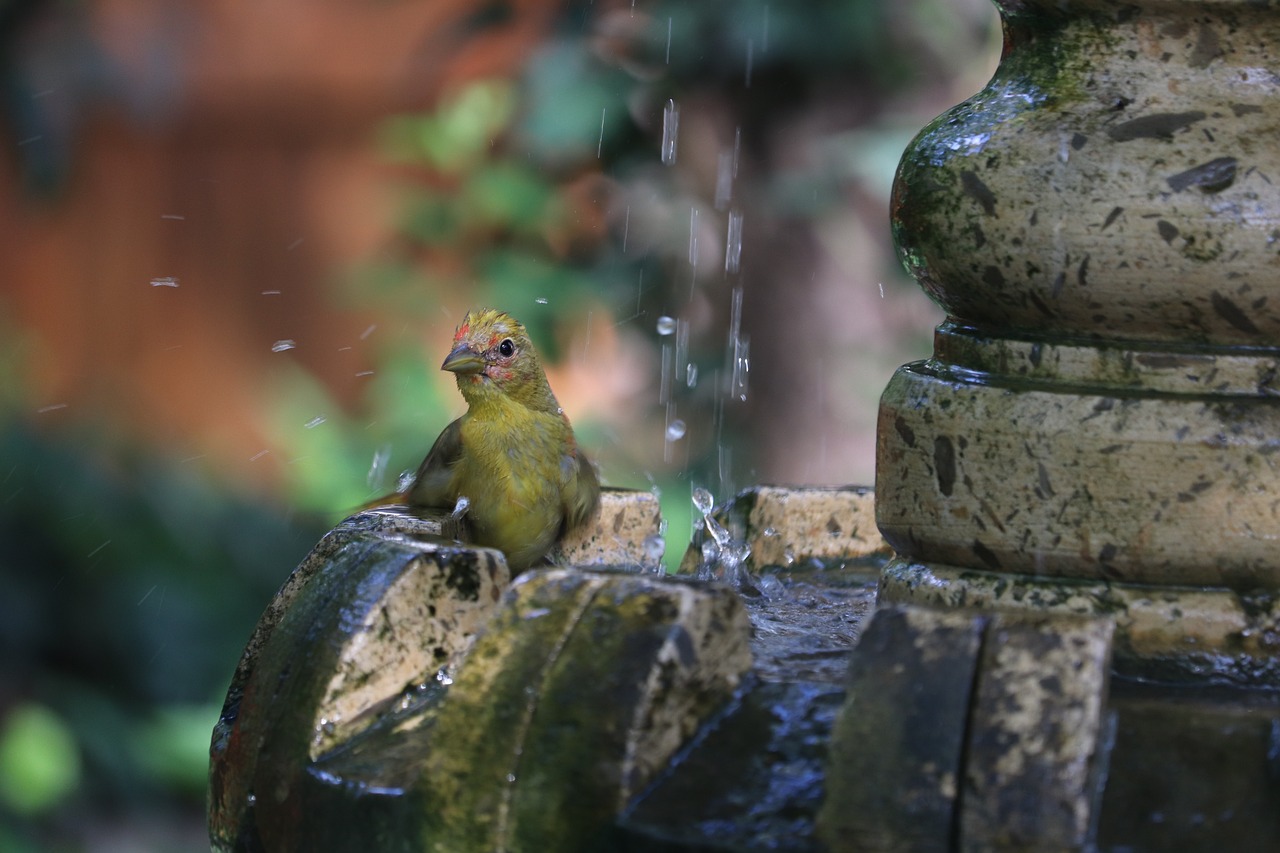
Providing Water Sources
When it comes to attracting birds to your garden, one of the most crucial elements is providing a reliable source of water. Just like us, birds need water not only to quench their thirst but also for bathing and maintaining their feathers. Imagine a hot summer day; you’d want a refreshing drink and perhaps a cool dip, right? Birds are no different! By installing bird baths or water features, you can create an oasis that will draw in a variety of feathered friends.
It's essential to think about the types of water sources you can provide. Not all birds prefer the same kind of water feature. For instance, some may enjoy a simple shallow dish, while others might be attracted to a more elaborate fountain. Each type serves a purpose, and the variety can cater to different species. Here’s a quick look at some popular options:
| Type of Water Source | Best For |
|---|---|
| Shallow Dishes | Smaller birds like finches and sparrows |
| Fountains | Active birds that enjoy moving water, like robins and warblers |
| Bird Baths with Slopes | Variety of birds, especially those that like to wade |
Now that you have an idea of the types of water sources, let’s talk about location. Where you place these water features can make a world of difference. Ideally, bird baths should be located in safe, visible areas. Birds are cautious creatures, and they prefer spots where they can easily spot any potential predators. Placing your bird bath near some shrubs or trees can provide the perfect cover, allowing birds to feel secure while they enjoy a drink or a splash.
Additionally, consider the amount of sunlight the water source receives. A sun-drenched bath will warm the water, making it more inviting, especially during chilly mornings. However, too much sun can lead to algae growth, which is something you want to avoid. A balance is key! Regular maintenance is crucial; keeping the water fresh and clean not only attracts birds but also ensures their health. Dirty water can lead to disease, which is the last thing you want in your garden.
In summary, providing water sources is an essential step in creating a bird-friendly garden. By selecting the right type of water feature, placing it strategically, and maintaining cleanliness, you’ll be well on your way to transforming your garden into a vibrant sanctuary for birds. So, grab that bird bath, fill it up, and watch as your garden comes alive with chirps and flutters!
- How often should I change the water in my bird bath? It's best to change the water every 2-3 days, especially in hot weather, to keep it fresh and clean.
- Can I use tap water in my bird bath? Yes, tap water is fine, but avoid using water with chemicals or additives that could harm the birds.
- What can I do if birds aren't coming to my water source? Ensure the water is clean, the bath is in a safe location, and consider adding a fountain for movement to attract more birds.
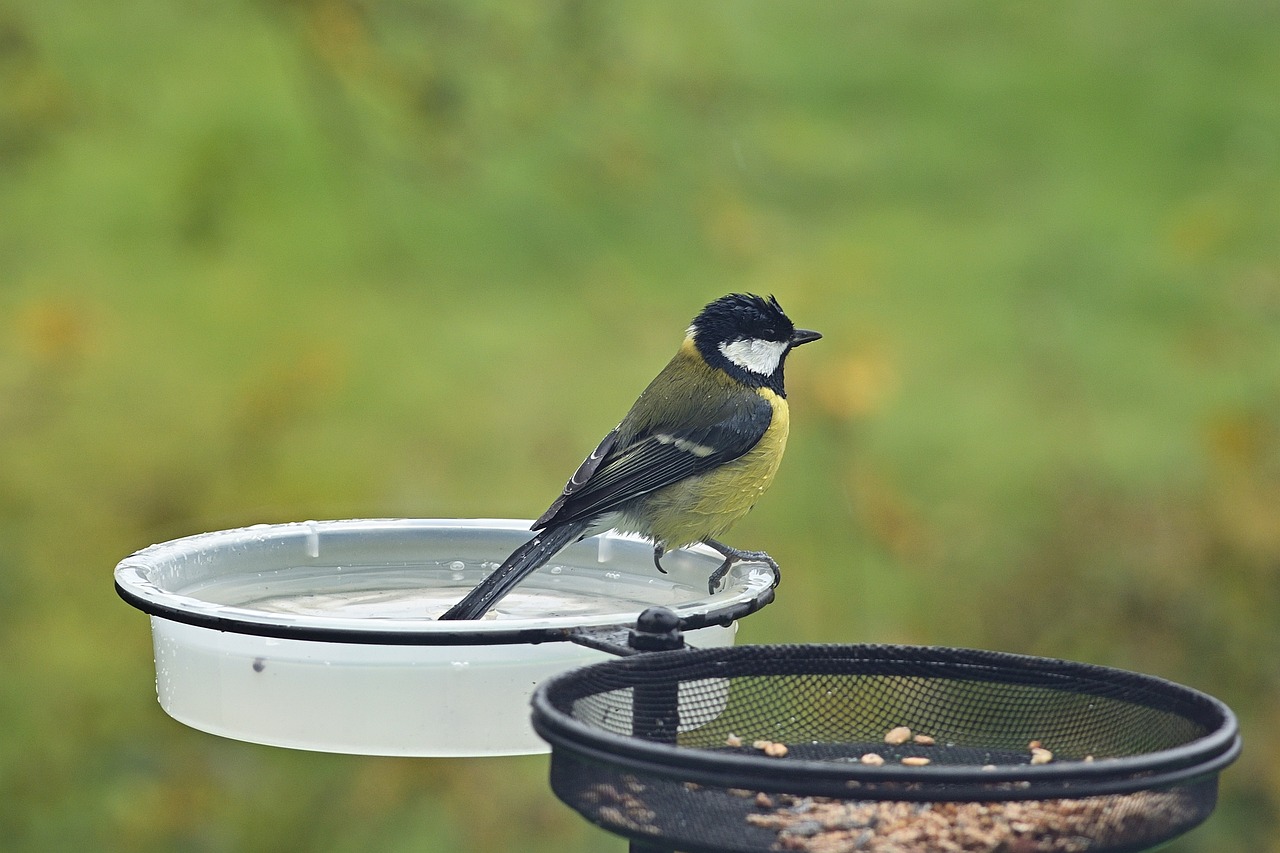
Types of Bird Baths
When it comes to attracting our feathered friends, the type of bird bath you choose can make a significant difference. Just like humans have preferences for certain types of pools or spas, birds also have specific needs when it comes to bathing. By understanding these preferences, you can create an inviting oasis in your garden that will have birds flocking to you in no time!
First off, let’s talk about the shallow bird baths. These are perfect for small birds like finches and sparrows, who prefer a gentle splash rather than a deep dive. Shallow dishes, typically only 1-2 inches deep, allow birds to wade in comfortably. You can even add some pebbles to the bottom to give them a secure footing. Just imagine a little finch hopping around, splashing water everywhere—it’s a joyous sight!
Next, we have the deeper bird baths, which can accommodate larger species such as robins and jays. These baths can be 3-4 inches deep and often come with a sloped design, allowing birds to choose their preferred water depth. A deeper bath may also be equipped with a fountain feature, which not only provides fresh water but also creates a gentle sound that attracts birds. Picture a serene garden with the soft trickle of water—how peaceful!
Another popular option is the ground-level bird bath. These are especially appealing to ground-feeding birds like doves and quail. By placing the bath directly on the ground or just a few inches above, you create a safe and accessible spot for these birds to enjoy a refreshing drink or splash. Ground-level baths can also be disguised with stones or plants, making them blend seamlessly into your garden.
Now, let’s not forget about decorative bird baths. These come in various shapes and styles, from elegant sculptures to whimsical designs. While they may serve as beautiful garden accents, it’s essential to ensure that they still meet the needs of the birds. It’s like having a fancy restaurant that also serves delicious food—both aesthetics and functionality matter!
In addition to the type of bath, consider the placement of your bird bath. Positioning it in a sunny spot surrounded by trees or shrubs can provide both warmth and shelter for the birds. This way, they feel safe while enjoying a refreshing dip. Remember, a little planning goes a long way in creating a bird-friendly environment!
Ultimately, the key to a successful bird bath lies in its maintenance. Regularly cleaning the bath to remove algae and debris is crucial. Birds are more likely to visit a clean water source, so make it a habit to refresh the water and scrub the bath at least once a week. It’s like keeping your pool clean—nobody wants to swim in murky water!
In summary, whether you opt for a shallow dish, a deeper fountain, or a decorative piece, the right bird bath can transform your garden into a vibrant sanctuary for birds. With the right setup, you’ll not only enjoy the beauty of these creatures but also contribute to their well-being. So, get ready to witness the delightful splash of wings as your garden becomes a popular bathing spot for a variety of birds!
- What is the best height for a bird bath? Ideally, bird baths should be placed at a height where birds can easily access them, typically 3-5 feet above the ground.
- How often should I change the water in the bird bath? It's best to change the water every few days, especially in hot weather, to keep it fresh and appealing for birds.
- Can I add chemicals to the water to keep it clean? No, avoid using chemicals as they can harm birds. Regular cleaning is the best way to maintain a safe environment.
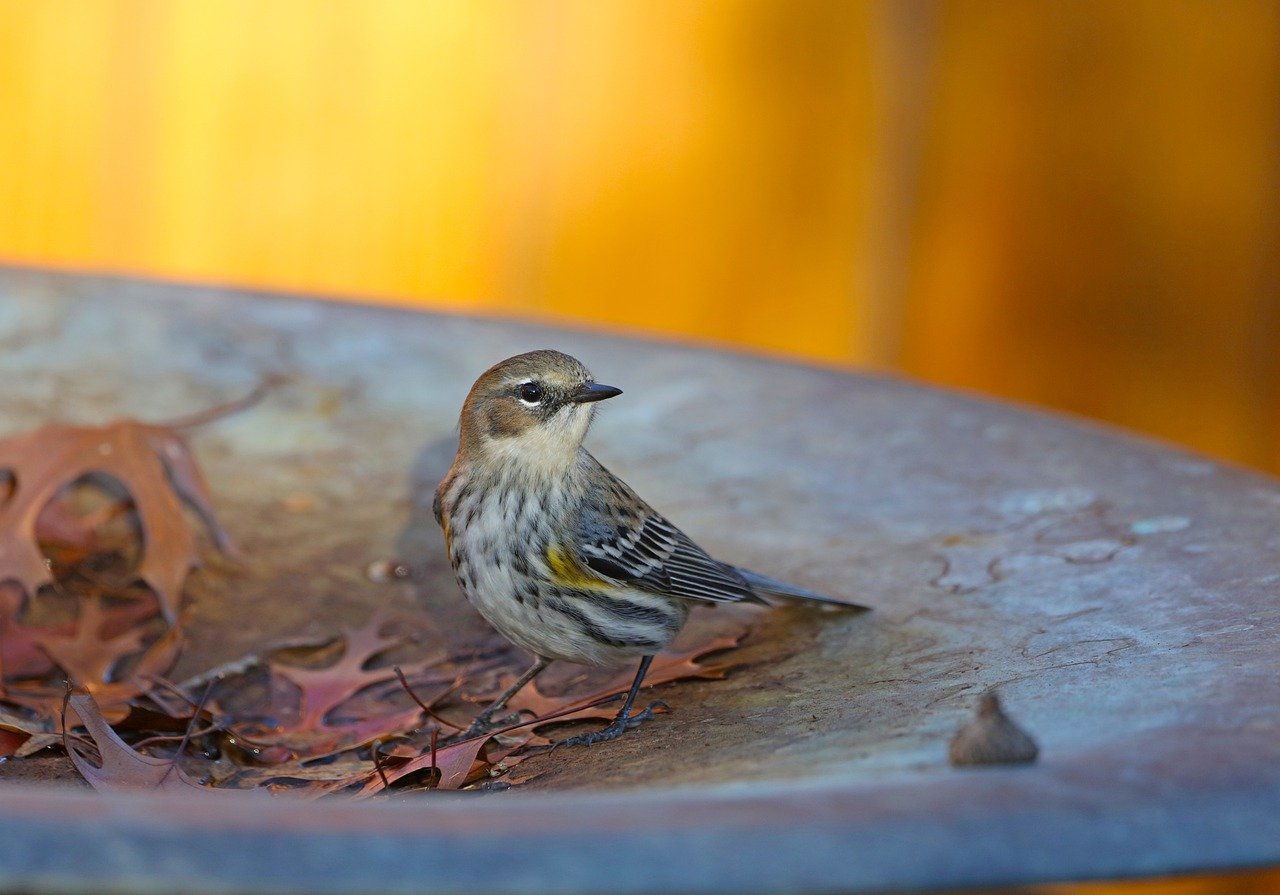
Location Matters
When it comes to attracting birds to your garden, location is everything. Imagine your garden as a cozy café for birds; they want to feel safe, comfortable, and have easy access to food and water. Placing bird baths in the right spots can make all the difference in whether or not our feathered friends decide to drop by. Ideally, bird baths should be positioned in areas that are both visible and accessible to birds, allowing them to spot the water easily while still feeling secure from potential predators.
Consider placing your bird baths near natural cover such as shrubs or trees. This way, birds can quickly dart into hiding if they sense danger. Additionally, having nearby trees or tall plants provides them with a perch to survey their surroundings before taking a drink or a bath. Just like you wouldn’t want to eat in a noisy, chaotic environment, birds thrive in tranquil settings where they can relax and enjoy their surroundings.
Another critical factor to consider is the amount of sunlight your bird bath receives. Birds are more likely to visit baths that are in sunny locations, especially during the cooler months. The warmth of the sun not only makes the water more inviting but also helps keep it from freezing in winter. However, too much direct sunlight can lead to algae growth, so finding a balance is key. A good rule of thumb is to place your bird bath in a spot where it gets morning sun but is shaded in the afternoon heat.
Lastly, it’s essential to keep the bath's location free from disturbances. Avoid placing it near high-traffic areas, like your patio or driveway, where noise and movement might scare birds away. Instead, think of a quiet corner of your garden that offers a peaceful retreat. By creating a serene environment, you’ll not only attract birds but also enjoy the soothing sounds of nature right in your backyard.
- What is the best time to attract birds to my garden?
Birds are most active during the early morning and late afternoon. These times are ideal for placing food and water sources out to attract them. - How often should I clean my bird bath?
It's best to clean your bird bath at least once a week, or more frequently during hot weather to prevent algae growth. - Can I use tap water in my bird bath?
Yes, tap water is fine, but make sure to let it sit for a few hours to allow chlorine to dissipate before filling the bath.
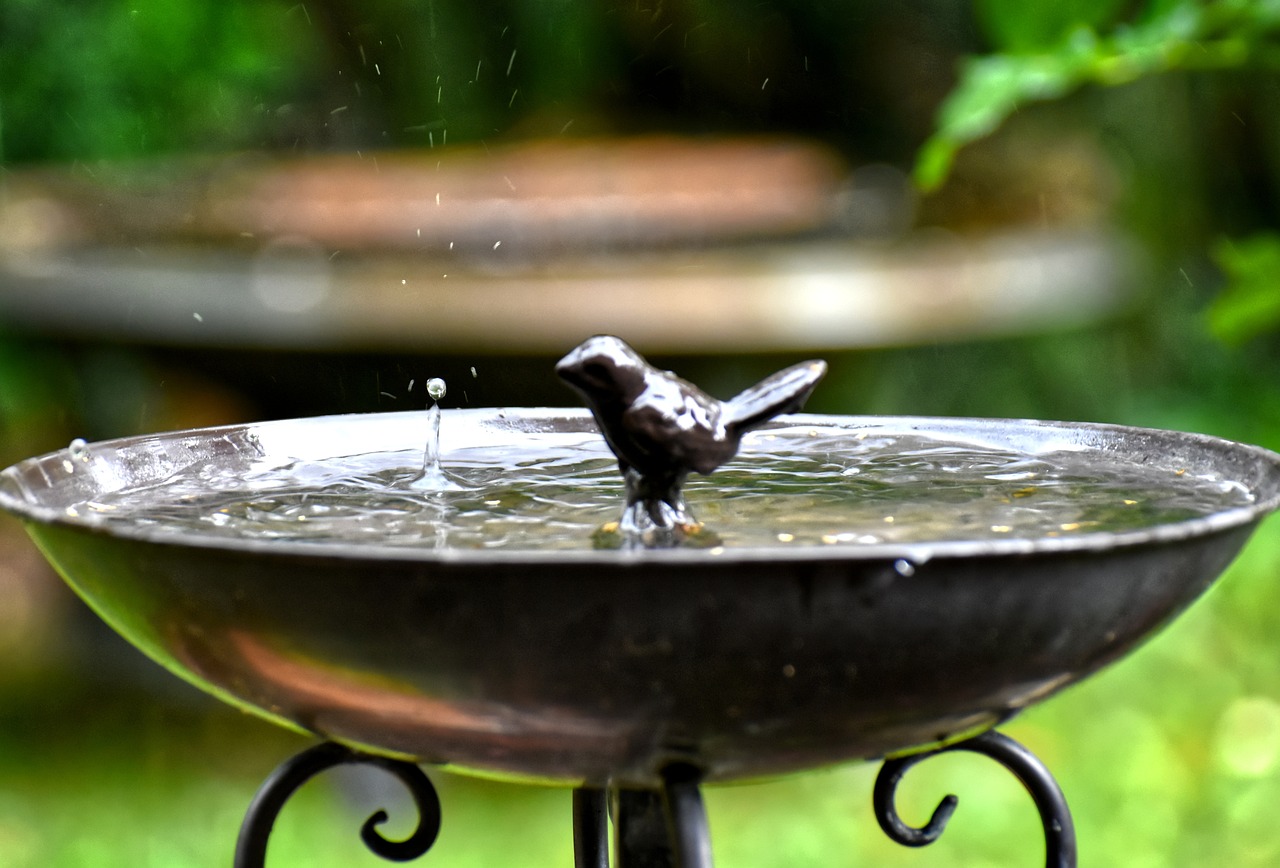
Maintaining Cleanliness
This article explores effective strategies for creating a bird-friendly garden, including habitat enhancement, food sources, and the importance of native plants to encourage diverse bird species.
Selecting native plants can provide essential food and shelter for birds, fostering a natural habitat that attracts various species. Understanding local flora is key to creating an inviting environment.
Birds need water for drinking and bathing. Installing bird baths or water features can significantly enhance your garden's appeal. Regular maintenance ensures clean water, making your garden a popular spot for birds.
Different styles of bird baths cater to various bird species. From shallow dishes to deeper fountains, choosing the right type can maximize bird visits and ensure their comfort.
Placing bird baths in safe, visible areas encourages birds to use them. Consider proximity to cover and sunlight to create an inviting space that attracts feathered visitors.
Regularly cleaning your bird baths is crucial for maintaining a healthy environment for your feathered friends. Just like we prefer fresh water, birds are no different; they thrive in clean conditions. A dirty bird bath can become a breeding ground for algae and harmful bacteria, which can lead to diseases among birds. To keep your bird baths in top shape, aim to clean them at least once a week, especially during hot weather when algae can grow more rapidly.
Here are some simple steps to ensure your bird baths remain sparkling clean:
- Empty the Bath: Start by completely emptying the bird bath of any old water.
- Scrub the Interior: Use a non-toxic brush or sponge to scrub the interior surfaces. A mixture of vinegar and water can effectively eliminate algae and stains.
- Rinse Thoroughly: After scrubbing, rinse the bath thoroughly to remove any cleaning solution residue.
- Refill with Fresh Water: Once cleaned, refill the bath with fresh water to entice birds back to your garden.
Furthermore, consider placing your bird bath in a spot where it receives sunlight for part of the day. This not only keeps the water warmer but also helps reduce algae growth. Keeping an eye on the water level is also important; during dry spells, topping it off helps ensure birds have access to this vital resource.
Providing safe nesting sites encourages birds to settle in your garden. Incorporating shrubs, trees, and nesting boxes can significantly increase the likelihood of bird families taking residence.
Offering a variety of bird feeders and foods can attract different species. Understanding the dietary preferences of local birds helps in selecting the right feeders and seeds for your garden.
Different feeders cater to specific types of birds. Tube feeders, platform feeders, and suet holders each attract unique species, enhancing the diversity of birds in your garden.
Choosing the right seeds can make a big difference in attracting birds. Sunflower seeds, nyjer seeds, and mixed blends appeal to a wide range of bird species, ensuring a bustling garden.
Q: How often should I clean my bird bath?
A: It's best to clean your bird bath at least once a week, especially in warm weather when algae can grow quickly.
Q: What types of plants are best for attracting birds?
A: Native plants are ideal as they provide natural food and shelter for local bird species.
Q: Can I use soap to clean my bird bath?
A: Avoid using soap as it can leave harmful residues. Instead, use vinegar and water for a safe clean.
Q: How can I tell if my bird bath is attracting birds?
A: Look for signs such as birds bathing or drinking, as well as feathers around the area.
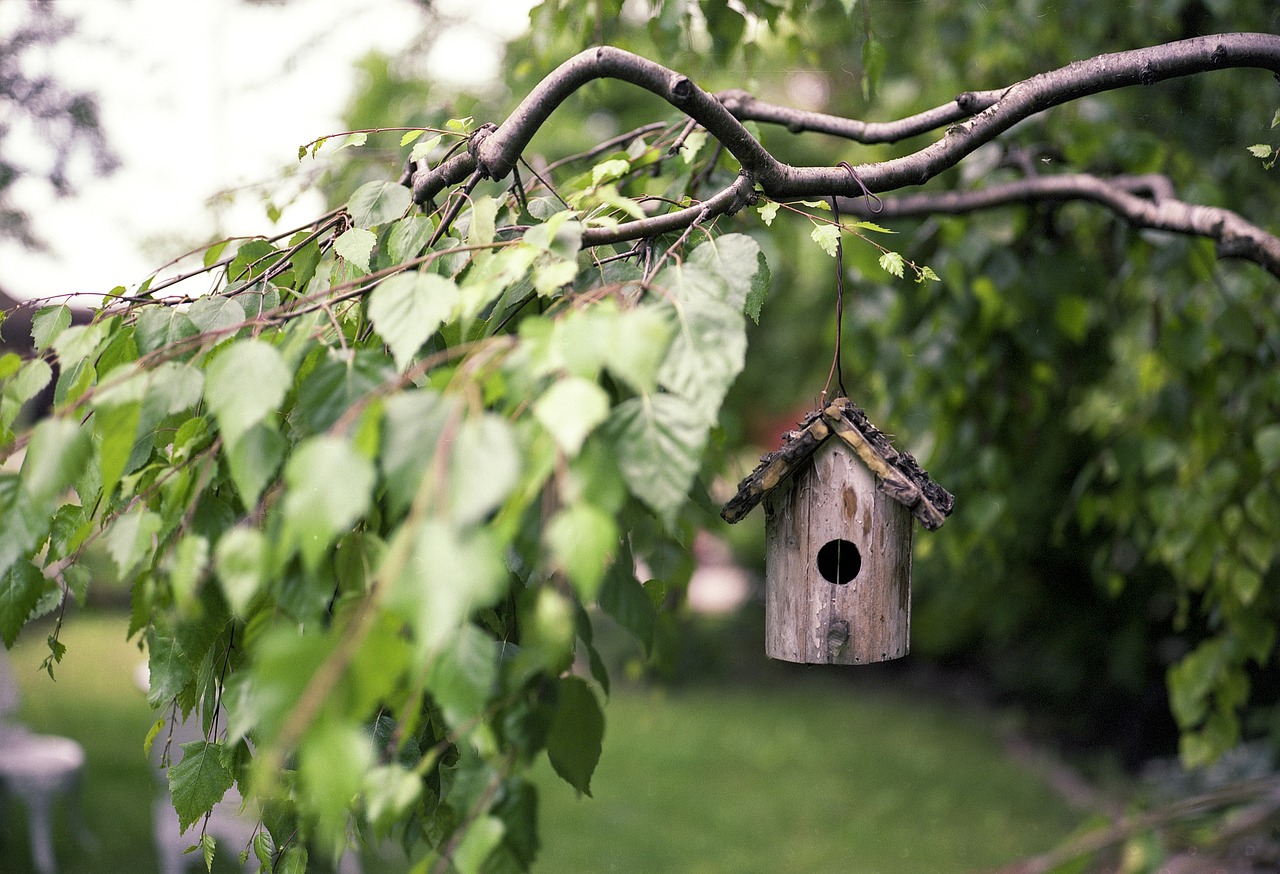
Creating Safe Nesting Areas
Creating a welcoming atmosphere for birds in your garden goes beyond just providing food and water; it’s essential to offer safe nesting areas where they can raise their young. Birds are instinctively cautious creatures, and they seek out locations that offer them protection from predators and harsh weather conditions. By incorporating the right elements into your garden, you can significantly increase the chances of attracting feathered families to make your garden their home.
One of the most effective ways to create safe nesting sites is by planting a variety of shrubs and trees. These plants not only provide cover but also serve as natural habitats for birds. Native species are especially beneficial, as they are adapted to the local environment and offer food sources for both adult birds and their chicks. For instance, dense shrubs can act as a shield from predators, while trees can offer high branches for nests, keeping them out of reach of ground-dwelling threats.
In addition to natural vegetation, consider installing nesting boxes. These artificial structures can be a game-changer for attracting certain species of birds, such as bluebirds, chickadees, and wrens. When placing nesting boxes, think about the following:
- Height: Position the boxes at a safe height, typically between 5 to 10 feet off the ground.
- Location: Choose a quiet spot away from heavy foot traffic and direct sunlight.
- Entrance Hole: Ensure the entrance hole is the right size for the bird species you wish to attract.
Moreover, it’s crucial to maintain a clean and safe environment around these nesting areas. Regularly check the nesting boxes for signs of pests or debris that could deter birds from using them. Additionally, providing natural materials such as twigs, leaves, and grass clippings can encourage birds to build their nests. You may even consider leaving some areas of your garden a bit wild, allowing nature to take its course, which can create a more appealing habitat for nesting.
Remember, the goal is to create a sanctuary where birds feel secure enough to raise their young. By blending natural plants with thoughtful additions like nesting boxes and safe spaces, you can transform your garden into a thriving bird community. So, get ready to witness the magic of life as you watch these beautiful creatures flourish right in your backyard!
Q: What types of birds are attracted to nesting boxes?
A: Many small bird species, such as bluebirds, chickadees, and wrens, are commonly attracted to nesting boxes. Each species has specific preferences, so it's essential to choose the right box design for the birds in your area.
Q: How can I tell if a nesting box is being used?
A: Look for signs such as bird activity around the box, nesting materials at the entrance, or even baby birds peeking out once they hatch. It's best to observe from a distance to avoid disturbing the birds.
Q: Is it necessary to clean out nesting boxes after the breeding season?
A: Yes, cleaning out the boxes after the breeding season is recommended to prevent the spread of disease and to prepare the box for new tenants the following year.
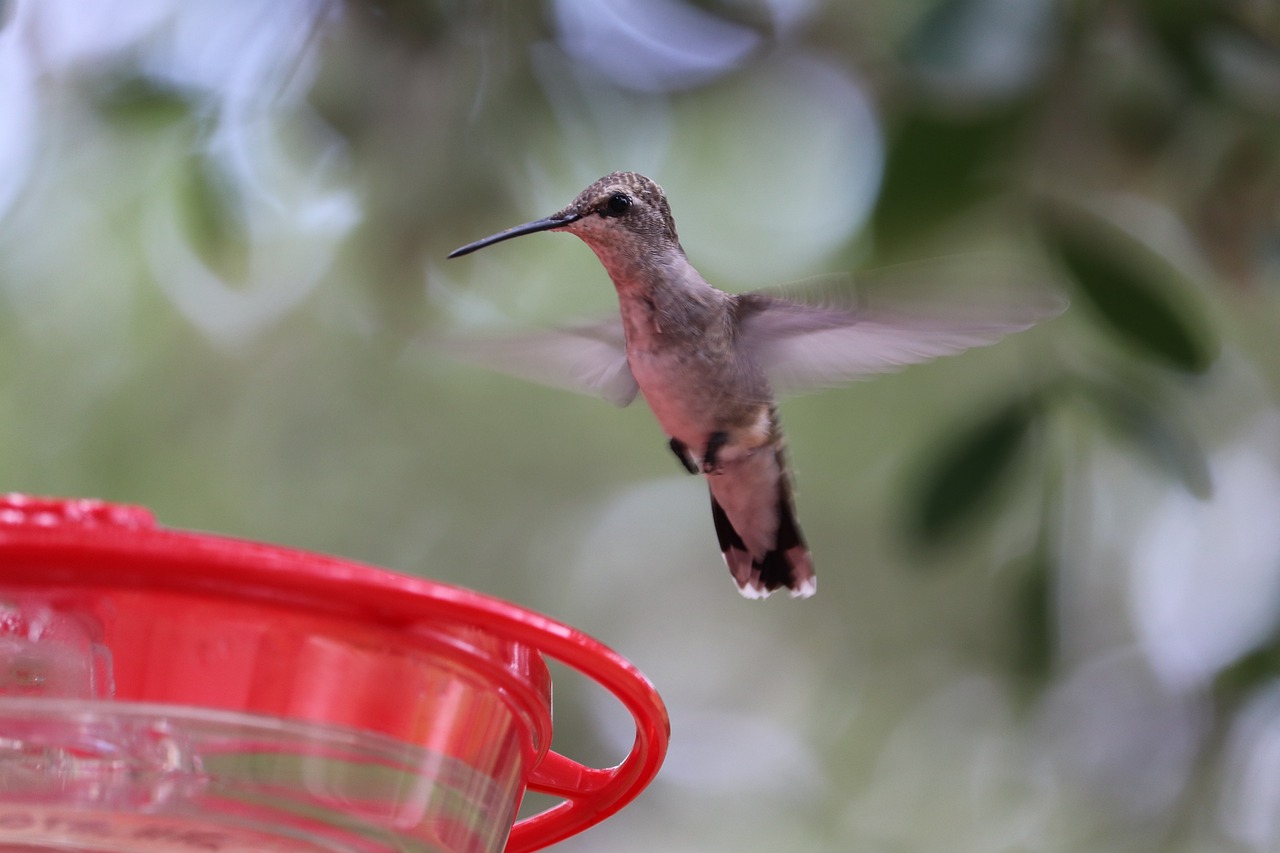
Feeding Birds Effectively
When it comes to attracting our feathered friends, is an art that can transform your garden into a bustling avian haven. Birds, like us, have their own unique tastes and dietary preferences, so understanding what they like is crucial. Imagine your garden as a five-star restaurant for birds, where the menu is tailored just for them! By offering a variety of feeders and foods, you can cater to different species and ensure that your garden is always lively with chirps and flutters.
One of the first steps in feeding birds effectively is to understand the local bird population and their dietary needs. For instance, some birds prefer seeds, while others might enjoy suet or nectar. It’s like hosting a dinner party; you wouldn’t serve everyone the same dish, right? You’d want to have options! Here are a few popular types of bird feeders that can help you create that perfect dining experience:
- Tube Feeders: Ideal for small birds like finches and chickadees, these feeders prevent larger birds from hogging the food.
- Platform Feeders: These open feeders attract a variety of birds, including ground feeders like doves and juncos, making them a versatile choice.
- Suet Holders: Perfect for attracting woodpeckers and nuthatches, suet is a high-energy food that birds love, especially in winter.
- Nectar Feeders: If you want to attract hummingbirds, a nectar feeder filled with sugar water is a must!
Now, let’s talk about the best seeds for birds. Choosing the right seeds can make a significant difference in who shows up at your garden buffet. Here’s a quick rundown of some favorites:
| Seed Type | Attracts |
|---|---|
| Sunflower Seeds | Cardinals, Chickadees, Nuthatches |
| Nyjer Seeds | Goldfinches, Pine Siskins |
| Mixed Seed Blends | Various species including Sparrows and Juncos |
By providing a diverse selection of seeds, you can ensure that different species will flock to your garden. Keep in mind that fresh seeds are key! Stale or moldy seeds can deter birds and even make them sick. So, it’s essential to regularly check and replenish your feeders.
In addition to seeds, consider offering mealworms or fruits as supplementary food sources. Many birds, such as robins and bluebirds, are attracted to these protein-rich snacks. It’s like adding a gourmet dessert to your menu; it makes the dining experience even more appealing!
Lastly, don’t forget about the importance of location when setting up your feeders. Position them near natural cover, like shrubs or trees, where birds can feel safe from predators. Also, placing feeders in a visible spot allows you to enjoy the show while keeping the birds comfortable. It’s all about creating a welcoming atmosphere!
Q: How often should I refill the bird feeders?
A: It's best to refill your bird feeders at least once a week, or more frequently if you notice that the food is running low. Keeping the feeders full will ensure that birds continue to visit your garden.
Q: Can I use table scraps to feed birds?
A: While some table scraps are safe for birds, it's important to avoid processed foods, bread, and anything with salt or sugar. Stick to natural options like fruits or unsalted nuts.
Q: How can I attract specific bird species?
A: Research the dietary preferences of the birds you want to attract and provide the right type of food and feeders. For example, if you want to attract hummingbirds, use nectar feeders filled with a sugar-water solution.
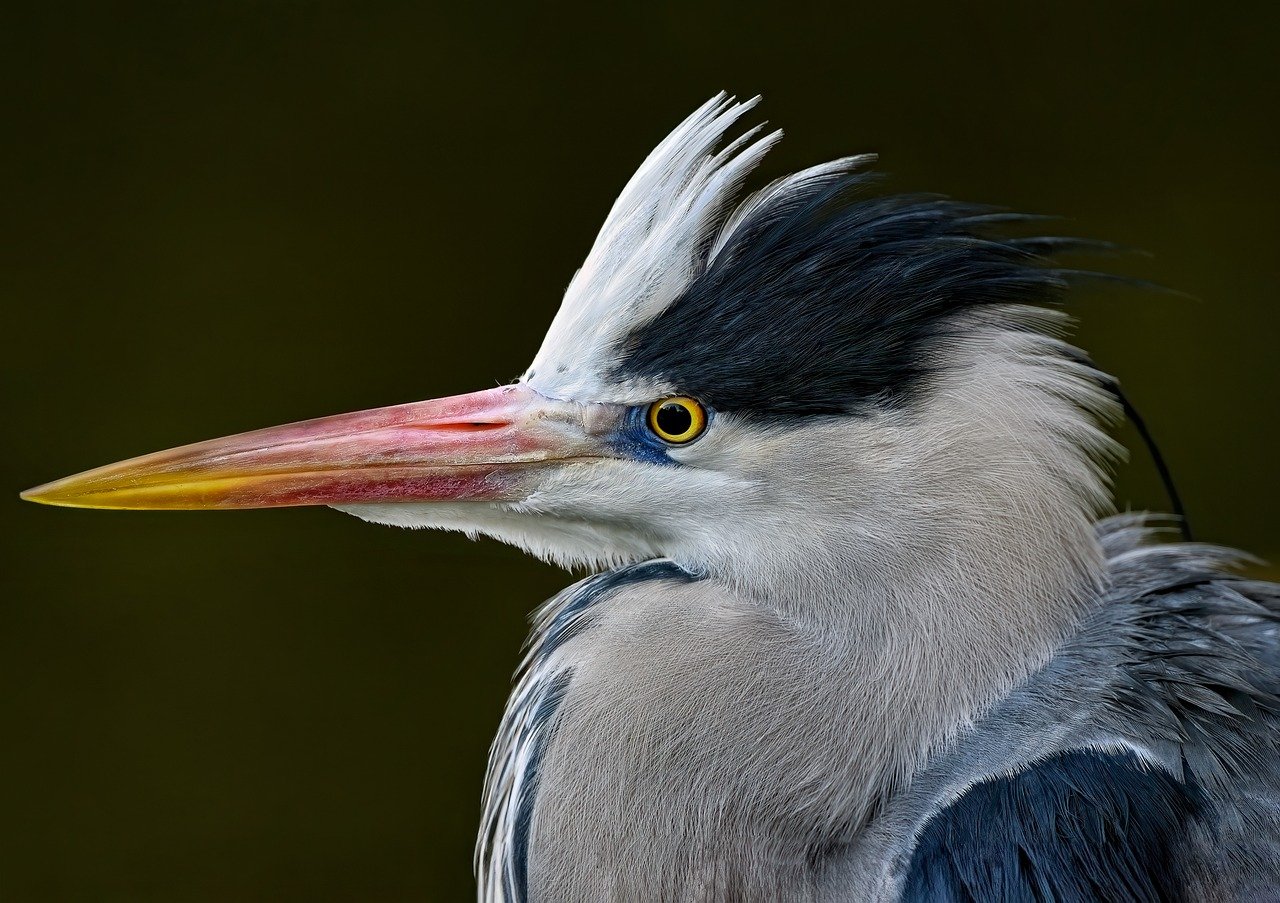
Types of Bird Feeders
When it comes to attracting our feathered friends, the type of bird feeder you choose can make a world of difference. Just like humans have preferences for certain restaurants, birds have their favorite dining spots too! By selecting the right feeders, you can create a bustling avian café right in your garden. Let's explore some popular types of bird feeders and how they cater to different species.
The first type is the tube feeder. These feeders are long and cylindrical, often made of clear plastic or glass, allowing you to see when it's time to refill. Tube feeders are particularly great for attracting smaller birds like finches and chickadees, as they can easily cling to the feeder while they snack on seeds. The design typically features small feeding ports that prevent larger birds from dominating the food source, ensuring that the little guys get their fair share!
Next up, we have platform feeders. These are essentially flat trays that can be placed on the ground or elevated on a pole. Platform feeders are perfect for attracting a wide variety of birds, including sparrows, doves, and even the occasional blue jay. The open design allows birds to easily access food from all angles. However, keep in mind that platform feeders can also attract unwanted visitors like squirrels, so placing them strategically can help manage this.
Another fantastic option is the suet feeder. Suet is a high-energy food made from animal fat, and it’s a favorite among insect-eating birds such as woodpeckers and nuthatches. Suet feeders come in various designs, often resembling cages or mesh bags that hold the suet cakes securely in place. These feeders are especially popular during colder months when birds need extra calories to stay warm.
To help you choose the best feeder for your garden, here's a handy table summarizing the key features of each type:
| Type of Feeder | Best For | Food Type |
|---|---|---|
| Tube Feeder | Small birds (e.g., finches, chickadees) | Seeds |
| Platform Feeder | Variety of birds (e.g., sparrows, doves) | Seeds, fruits, nuts |
| Suet Feeder | Insect-eating birds (e.g., woodpeckers) | Suet cakes |
Lastly, don’t forget about hummingbird feeders. These feeders are specifically designed to attract hummingbirds with sweet nectar. They often feature bright colors and are shaped to mimic flowers, which is irresistible to these tiny acrobats. Hummingbird feeders require a bit more maintenance, as the nectar needs to be changed regularly to prevent fermentation, but the sight of these dazzling birds flitting around your garden is well worth the effort!
In conclusion, the right bird feeder can significantly enhance your garden's appeal and attract a variety of species. By understanding the preferences of your local birds and selecting feeders accordingly, you can create an inviting space that not only provides nourishment but also brings joy to your outdoor experience. So, what are you waiting for? Get those feeders set up and watch your garden come alive with the vibrant colors and cheerful songs of birds!
- What is the best time to put out bird feeders? It's best to have your feeders ready before winter, as birds will be looking for reliable food sources during the colder months.
- How often should I clean my bird feeders? You should clean your feeders every two weeks, or more often if you notice mold or a buildup of old food.
- Can I use regular seeds to feed birds? While some seeds are fine, it's best to use seeds specifically formulated for birds to ensure they get the right nutrition.
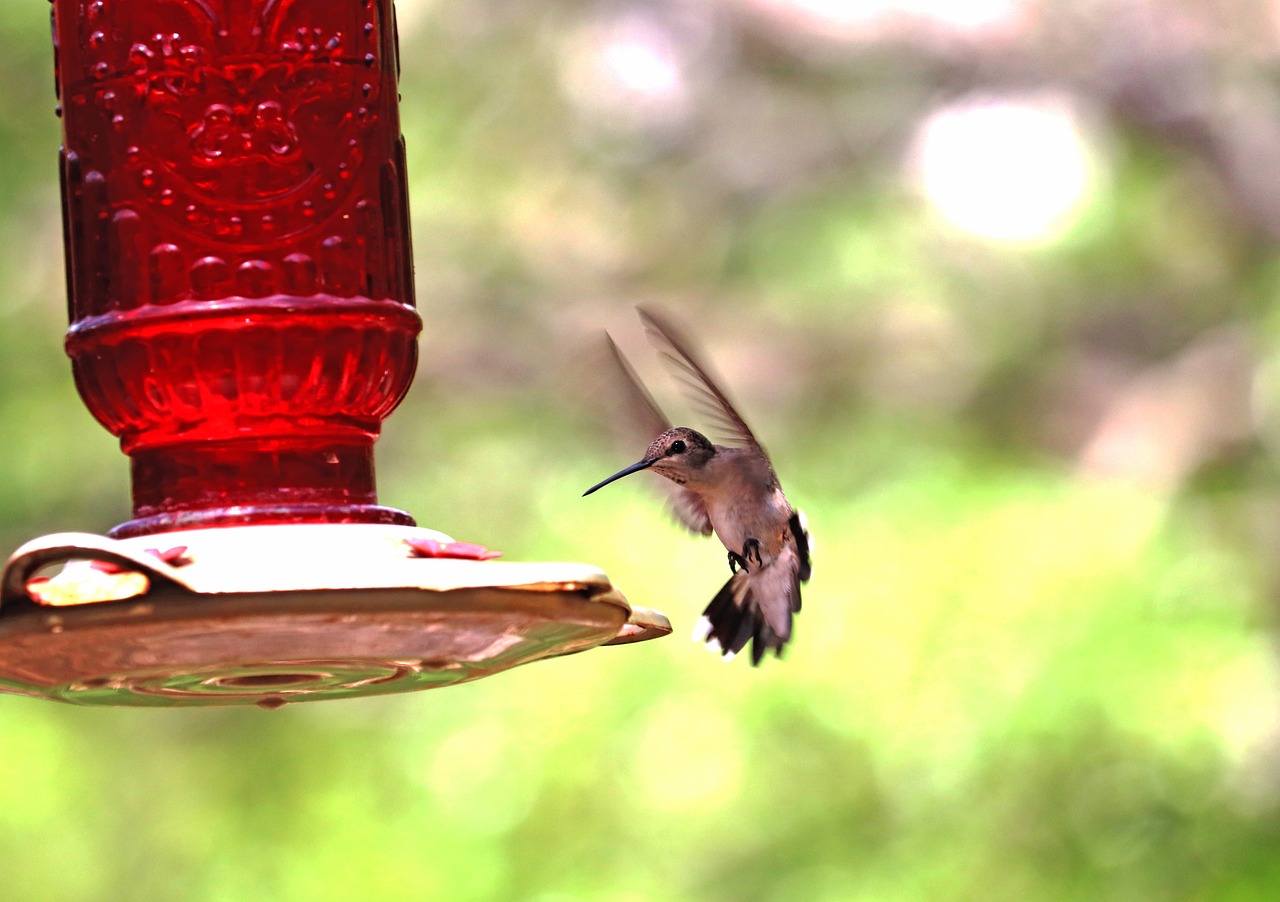
Best Seeds for Birds
When it comes to attracting our feathered friends, choosing the right seeds can truly make a world of difference. Just like we have our favorite foods, birds have their preferences too! By understanding these preferences, you can create a bird buffet in your garden that will keep them coming back for more. Some seeds are like gourmet treats for birds, while others are more of a side dish. So, let’s dive into the best seeds that will turn your garden into a vibrant avian paradise!
First up, we have sunflower seeds. These are the all-time favorites among many bird species, especially finches, cardinals, and chickadees. They are rich in oil and provide a great energy source, especially during the colder months. You can either opt for whole sunflower seeds, which are often more appealing, or the hulled variety, which makes it easier for birds to eat without making a mess. No wonder sunflower seeds are a staple in many bird feeders!
Next, let’s talk about nyjer seeds (also known as thistle seeds). These tiny black seeds are a magnet for goldfinches, pine siskins, and other small birds. Nyjer seeds are high in fat and protein, making them an excellent choice for providing the energy birds need. To attract these species, it’s best to use a specialized feeder with small holes that allow only the tiny seeds to be accessed.
Another great option is mixed seed blends. These blends often contain a variety of seeds, such as millet, safflower, and sunflower, appealing to a wide range of birds. However, be cautious when selecting mixed seeds, as some might contain fillers that birds tend to avoid. Look for blends with high-quality seeds that are known to attract your local bird species.
To give you a clearer picture, here’s a table summarizing the best seeds for birds and their favored species:
| Seed Type | Best For |
|---|---|
| Sunflower Seeds | Finches, Cardinals, Chickadees |
| Nyjer Seeds | Goldfinches, Pine Siskins |
| Mixed Seed Blends | Various Species |
Don’t forget about suet cakes! While not a seed, they are an excellent addition to your bird feeding strategy. Suet is high in fat and provides essential energy for birds, especially during the winter months. Woodpeckers, nuthatches, and wrens are particularly fond of suet, making it an enticing option to diversify the types of birds visiting your garden.
In conclusion, by carefully selecting the right seeds and providing a variety of options, you can create an inviting atmosphere for birds in your garden. Remember, just like us, birds appreciate a good meal, so keep their preferences in mind and watch your garden come alive with the sounds of chirping and fluttering wings!
Q: What seeds should I avoid?
A: Avoid seeds like corn and wheat, as many birds do not find them appealing. Stick to high-quality seeds that cater to your local bird species.
Q: How often should I refill bird feeders?
A: It’s best to refill bird feeders regularly, especially during peak feeding times like early morning and late afternoon. Keeping feeders filled ensures birds have access to food when they need it most!
Q: Can I mix different types of seeds?
A: Absolutely! Mixing seeds can attract a variety of bird species, but be mindful of the proportions to ensure that all seeds are consumed and not wasted.
Frequently Asked Questions
-
What types of plants should I include in my garden to attract birds?
Including native plants in your garden is crucial. They provide the right kind of food and shelter for local birds. Think of plants like sunflowers, berry bushes, and wildflowers that are native to your area. These plants not only beautify your garden but also create a welcoming habitat for various bird species.
-
How can I provide water for birds in my garden?
Birds love water for drinking and bathing! You can install a bird bath or even a small water feature. Make sure to place it in a safe, visible area where birds can easily spot it. Regularly change the water and clean the bath to keep it fresh and inviting!
-
What are the best types of bird feeders to use?
There are several types of bird feeders, each catering to different species. Tube feeders are great for small birds like finches, while platform feeders attract larger birds. If you want to offer suet, consider a suet holder. Mixing and matching these will enhance the variety of birds visiting your garden!
-
How often should I clean my bird feeders and baths?
It's important to clean your bird feeders and baths at least once a week. This helps prevent mold and disease, ensuring a safe environment for the birds. Keeping everything fresh and clean will make your garden a top choice for feathered friends!
-
What seeds are best for attracting a variety of birds?
To attract a diverse range of birds, consider offering sunflower seeds, nyjer seeds, and mixed seed blends. These options are popular among many bird species and will keep your garden bustling with activity!
-
How can I create safe nesting areas for birds?
To encourage birds to nest in your garden, provide shrubs, trees, and nesting boxes. These elements offer protection and a cozy environment for birds to raise their young. The more safe spaces you create, the more likely you are to see bird families in your garden!



















